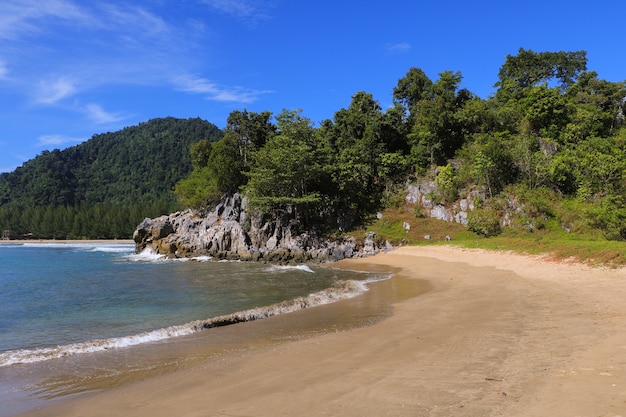

In order to highlight and emphasize the vast landscape, the service buildings on the beach – the “beach stations” – have a special character: They follow the grand lines of the landscape and are designed and laid out as cliffs for people to walk on and around. Three focal points are particularly important in the new landscape: the point at the extreme east that governs the main orientation of the two beaches, and the two delineating jetties to the north and the south. The coastline is laid out in consideration of the dynamic forces of wind, waves and currents. Long accurate lines of sight go through the beach park and the bridges across the lagoon are important elements in the entire scenography. The architectural structure focuses on the meeting between the linear coastal road and the building lines in the flat landscape of the island of Amager and the new coastline. In the southern and central areas of the Beach Park, a number of specially designated areas are available for further development, now under ways. The project was based on an open dialogue with various stakeholders: focus groups, interest organisations and local users were involved in a continuing effort to develop the project’s qualities.Īmager Beach is fully finished with jetties, islands, promenades, paths, dunes, green areas, beach stations, etc. Once the 200 million Danish kroner that the project would cost had been allocated, the beach could be designed, planned and established relatively quickly. The necessary plans were then prepared and adopted. Over a period of 20 years, local and regional authorities were involved to an increasing extent, and the project’s individual elements and features were gradually developed. The gap between the new area and the existing coast was to be maintained in the form of lagoons serving as protected areas for water activities. The area was to be a lively landscape for human activity. Openness was to be the predominant quality in the area, and the beachline was to be moved further out to form a better beach. The visions for this project were formulated in the early 1980s by local grassroots and various stakeholders. Aircraft flying to and from Copenhagen Airport and ships sailing through the Sound show Copenhagen’s status as a major hub in Scandinavia. The open sky and wide horizon offer unique experiences. The new Amager Beach is designed to be a very special place in the city: a large-scale landscape that provides a contrast to the density of the Copenhagen waterfront. The beach park has transformed the coastal landscape of the city and the island of Amager facing the Sound. Amager Beach Park has been one of the largest urban recreational development projects, close to the city centre of Copenhagen. These porous surfaces are not only environmentally friendly, they are also cost effective and a reducer of runoff water. When designing your landscape, incorporate porous surfaces, such as mulch, bricks, gravel and turf block. Water that runs off from these surfaces may contain pollutants that are then carried off into bodies of water, further contaminating our oceans and environment. When possible, refrain from using non-porous surfaces, including blacktop and concrete, for hardscape. Hardscape Hardscape is the non-grass surface that makes up your landscape.Remember to keep in mind that nearby buildings and structures may provide shade for your plants.
Beach landscape full#
Consult a sales associate at your local nursery to find out if the plants that you're planning to use prefer full sun, light shade, part shade or full shade. The plants you choose and where you place them will significantly depend on the type of sun your property receives. Sun exposure When creating a green landscape for your beachfront property, sun exposure is another important factor to consider.The Japanese black pine tree, willow oak, oleander and confederate jasmine are all types of vegetation that are extremely tolerant of salt, sandy soil and drought. If your home is within 1/8 of a mile (201 meters) from the oceanfront, you should be planting vegetation with varying degrees of salt tolerance. Salt tolerant vegetation One of the most important factors to consider when landscaping a coastal region is salt-tolerant plants.


 0 kommentar(er)
0 kommentar(er)
